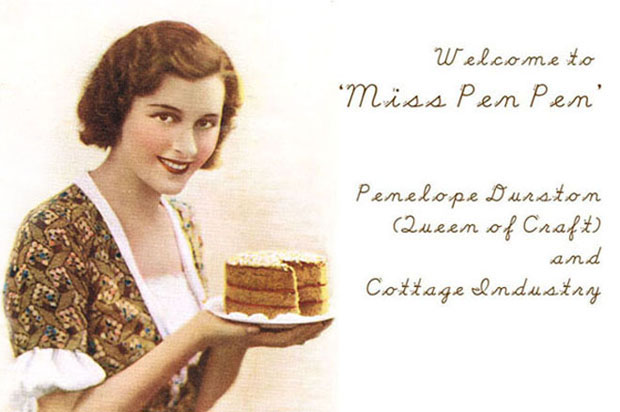First off I'd like to say thanks to everyone who texted, phoned, emailed or left a message about yesterday's article. 100% positive feedback.
That is 100% positive feedback from those that chose to get in touch with me but I am no fool and am quite aware that there are a few people out there who aren't happy about some of the issues raised. Sadly none of them have chosen to enter the conversations here.
So I thought I might write a bit more and hopefully they might have a think about a few issues that I think are important.
OK, first off the rank, there seems to be a problem over the terms 'Amateur' and 'Professional'. So I've pulled Mr Macquarie off the shelf- when in doubt check the dictionary!
An amateur has two relevant (in this case) definitions, the first is 'one who cultivates any study or art or other activity for personal pleasure instead of professionally or for gain' and the other is 'a superficial or unskilled worker; dabbler'. The latter stings a bit doesn't it? It's the former that I tend to use, the important bit 'instead of.... for gain', that means you aren't selling the things you are making for money or reimbursement of some kind.
Now if you call yourself a professional then you are 'following an occupation as a means of livelihood or for gain; one who makes a business of an occupation, etc, especially of an art or sport, in which amateurs engage for amusement or recreation.'
So you've sold something you've made, for money, are you a professional?
Well 'professional' brings some baggage with it.
You've taken cold hard cash (or Paypal or Spanish Doubloons or .........) and you now have the responsibility to give the government some of that. Remember when you applied for that ABN, registered the name you wanted for your business (could be your blog name but remember it actually has to be registered and confirmed with your state government to be legal- someone else might have it and you might be illegally using it or someone might 'steal' it out from under you) well doing these things brought commitments- things like tax, keeping records of money spent and earned.
There is also the commitment you make to the buyer of the item. This is that the item they are purchasing should be of an agreed quality, that it shouldn't fall apart when they get it home and that it should do what it was sold to do. This can be an area that is somewhat subjective and open to interpretation. Probably easiest to define as 'how would you feel if you got it home and it fell apart?', be honest with yourself about this! Don't settle for the 'but it's handmade' line- handmade should be well-made!
When you made that 'thing' that you sold, did you work out how much it really cost to make?
Did you buy the components retail? (Remember each piece was therefore twice (or more)the price it would've cost wholesale.
Did you have to buy a metre when all you wanted was 20cm?
Did you have to drive for 4 hours to get it?
Did you have to pay postage if you bought it mail order?
You made the first few out of some op-shop fabric you had in the cupboard but now you have orders for more and you will need to actually buy fabric at a real price- did you take that into account when you came up with the original price?
You stayed up all night with the lights burning in the spare room that is now your studio, you've been taking internet orders over your broadband connection, you've been using your car to get supplies............ can you see where I'm heading with this? The sales of all your creatively produced items need to be able to contribute to these bills. They need to pay their way!
Did you know that if you sell a product retail with a wholesale component (that is you are selling your wares to a retailer who sells them on to the public) that the final price will be 5x the base cost (materials and labour and utilities). So the (hopefully) 2 1/2x that's coming your way is going to cover costs, profit and a tax component.
Go on have a go!
How much have you been selling that 'thing' for?
Have you ever worked out an 'hourly rate'? That's the money you need to get back just for your time (and that includes the 4 hours in the car hunting that special component down). How much do you earn in your 'day job'? What does the government define as a base wage? Rude shock huh? Remember most artists and creative types survive on their part time/full time jobs rather than on their artistic endeavours.
Realistically, how much do you need to make to survive?
How much do you need to sell to cover costs?
So work out an hourly rate and time yourself. Remember making a production run is quicker per unit than doing sampling or making one-offs.
Sometimes you might need to sell something for a low return but these are products that you intend to sell a lot of, so quantity wins over a high profit. Other times you might find that you can sell something and make more of a return. Swings and roundabouts.
Now about the ethics of being a professional. Have you noticed down the bottom of that pattern you've been using that it says 'This pattern is for personal use only. Do not sell items made from this pattern'. It might even have a Copyright symbol and the designers name and a date, this means that you are not to sell the final product created from the pattern. You can not get monetary gain. You can make it for yourself and to give to your family and friends but that is it. NO GAIN!
Some things I make are part of a long tradition of functional objects, tea cosies are a good example of this. These things are in many ways exempt from copyright in their look, but as I cut my own pattern and chose to create them in a particular manner they become my intellectual property. Many designs have a zeitgeist feel in their development and creation, that is many people come up with similar designs at the same time. Call it fashion. So if you are going to develop a product that is of a recognisable heritage then think how you can make it your own.
And this brings us to POD.
POD stands for Point of Difference. What makes your product individual, interesting, unique?
What story are you telling? Are you just 're-packaging' something, putting your brand on it?
Do you have a concept? A theme that runs through the pieces you make?
Will people come out looking for your work? What is your market? Who buys your product?
Are you selling to a small pool of like minded people, is this a 'closed' pool, will it run out one day? Are you inventive enough to come up with fresh ideas- regularly?
OK so I've bombarded you with questions...... are you thinking about them? Are you being realistic about the amateur/professional scale? It is a scale you know, a sliding scale, you don't just end up in one group or the other, you work you way along depending on a multitude of things.
The main thing is there is no amateur=bad/professional=good part to this. What it is about is that if you want GAIN then you need to treat it seriously and produce work that you have designed and made with integrity and quality. This is were the definition of craft comes in......
Craft can mean 'skill, ingenuity, dexterity; an art requiring special skill, especially manual skill; a handicraft'. Now I know a heap of hugely talented people whose craft and design skills are seriously beyond belief but they without fail consider themselves amateurs because they don't aim to sell their work. They spend their creative time developing their skills and enjoying creating. Excellent! To me craft is all about skill, it's not about expensive branded products as I wrote yesterday. Sadly modern hobby craft is being driven heavily by consumerism, 'buy the equipment, buy the fabric designed by XX, etc', which is a sad indictment of what is meant to be a return to basics movement...... but that's a post for another day.
So I'm going to repeat- you don't need to sell your craftwork to justify why you are doing it!
You see (and this is the bitter pill)...............
Not all craft is equal.
(And you know what?-that's just fine!)
Discuss in 500 words.





































































